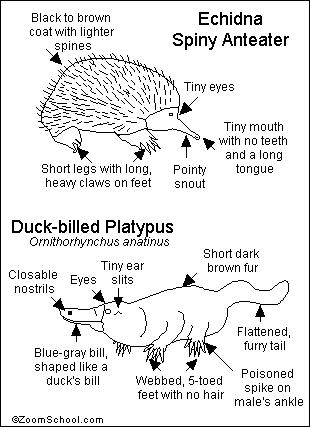
 |
| You might also like: | Monotremes | Marsupials | The Evolution of Mammals | Loris Printout | Duck-billed Platypus Read-and-Answer Quiz | Today's featured page: Explorers of Mexico |
| EnchantedLearning.com More Mammal Printouts | Monotremes | Animal Printouts Label Me! Printouts |


| Search the Enchanted Learning website for: |